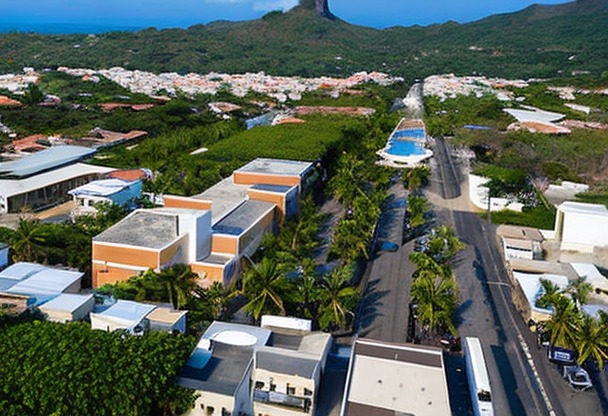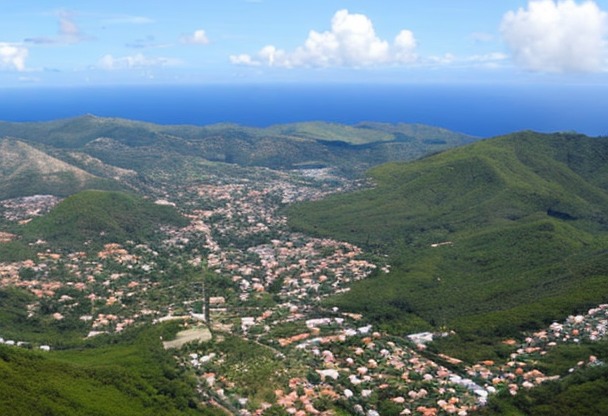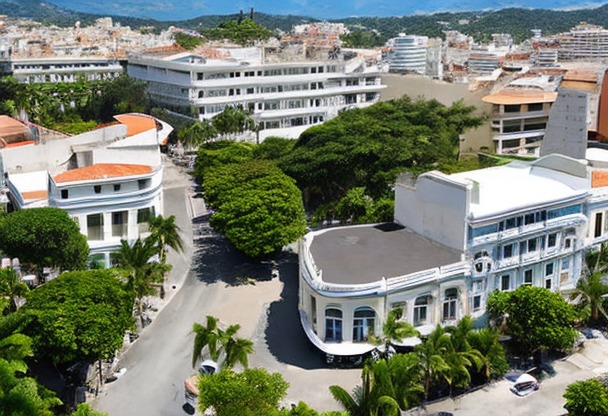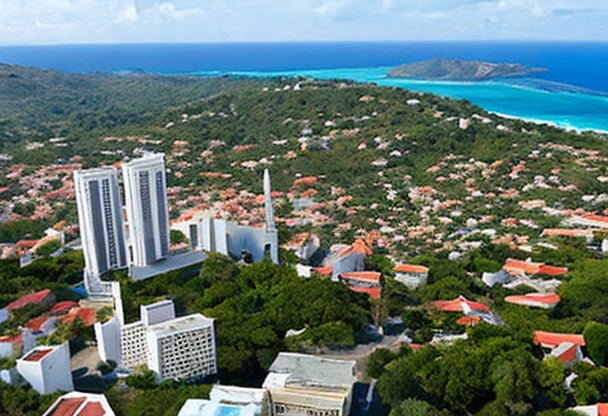Best time to travel to the Dominican Republic
Choosing the right period for your trip to the Dominican Republic can make all the difference. It's important to consider weather elements, seasonal events and peak tourist periods to maximize your travel experience.

Location
Climate
The seasons in the Dominican Republic: what can you expect?
Located in the Caribbean, the Dominican Republic enjoys a tropical climate with pleasant temperatures all year round. However, there are two main seasons to bear in mind when planning your trip:- The dry season (December to April): characterized by a cooler, less humid climate, this period is ideal for enjoying the beaches and tourist sites without fear of the tropical showers that are frequent in summer.
- The wet season (May to November): marked by higher temperatures and high humidity, this season also sees an increase in rainfall, particularly between August and November.
Tourist numbers: high and low season
In addition to weather conditions, it's important to take tourist numbers into account when choosing the period of your stay. In the Dominican Republic, there are two main seasons:- High season (December to April): corresponding to the dry season, this period attracts large numbers of visitors in search of sun and warmth. Prices for accommodation and activities are generally higher, and advance booking is recommended to guarantee availability.
- Low season (May to November): less popular due to less favorable weather conditions, this season nevertheless offers more affordable rates and a more relaxed atmosphere. However, some activities and attractions may be closed or limited due to the weather.
Public holidays and major cultural events
The Dominican Republic celebrates numerous public holidays and cultural events throughout the year. Planning your stay around these festivities can help you discover unique aspects of Dominican culture, but it's also important to be aware of possible disruptions or service closures during these periods.Public holidays not to be missed
- Independence Day (February 27): commemorating the country's independence from Haiti in 1844, this day is marked by parades and celebrations across the country.
- Semana Santa (week before Easter): this holy week is a period of great religious importance for the Dominicans, with numerous processions and ceremonies in churches and streets.
- Christmas and New Year (December 24 and 31): although the festivities are more family-oriented, hotels and restaurants often offer special evenings to celebrate these occasions.
Major cultural events
In addition to public holidays, several cultural events attract visitors from all over the world every year:- Santo Domingo International Jazz Festival (October): bringing together local and international artists, this festival offers several days of concerts at different venues in the capital.
- The Merengue Festival (July): celebrating merengue, the national dance of the Dominican Republic, this event offers a varied program of workshops, shows and free concerts.
- La Vega Carnival (February): considered one of the most important carnivals in the Caribbean, this event attracts thousands of people to admire parades of traditional floats and masks.
Trade winds and water sports
If you're a fan of water sports such as windsurfing or kitesurfing, the trade winds generally blow regularly between December and June. This period is therefore ideal for enjoying optimal conditions for these activities. However, it is also possible to find suitable spots all year round, depending on the region.Insurance

Your credit card does not cover you in all situations, that is whyIt is essential to take out insurance before you leave to avoid any unpleasant surprises. If you need to see a doctor or be hospitalized, in some countries, medical costs are very high and you will then find yourself having to pay several thousand euros.
Our partner Chapka Insurance proposes the contract CAP ASSISTANCE 24/24 with many essential guarantees.


Flights

Your flight has been cancelled or delayed ?
You may be eligible for a compensation of up to €600 ! For this, lawyers are responsible for handling your claim with the airline and are only paid when the reimbursement is effective.
In conclusion, no financial risk for you, only advantages!
Statistics on immigration to the Dominican Republic
According to data provided by the National Statistics Office (ONE), the foreign population residing in the Dominican Republic has increased in recent years. In fact, over the last decade, the number of foreigners living in the country has almost doubledfrom 245,000 in 2010 to over 500,000 in 2020. Among the nationalities most represented are mainly Haitian, American, Venezuelan and Spanish nationals. Haitians make up the majority of immigrants, accounting for around 70% of the foreign population. There is also a strong presence of Venezuelans, fleeing their country's economic and political crisis.Most popular visas in Dominican Republic
Visa applications for the Dominican Republic are quite varied, ranging from tourist visas to work or study visas. Here are the most popular types of visa:- Tourist visa The most commonly requested visa, allowing you to stay in the country for vacations or family visits. The maximum duration of this visa is usually 30 days.
- Business Visa The Dominican Republic: for professionals wishing to travel to the Dominican Republic for meetings, conferences or business negotiations.
- Work visa for foreigners who have obtained an employment contract with a local company and need to move to the country to carry out their professional activity.
- Study visa granted to international students wishing to pursue their studies at a Dominican institution.
- Temporary residence visa For foreigners wishing to live in the Dominican Republic for a specific period, generally between six months and two years.
International tourism figures for the Dominican Republic
The tourism sector is one of the pillars of the Dominican economy, accounting for around 8% of national GDP. In 2019, the Dominican Republic recorded a record year for tourist numberswith over 6.4 million international visitors. However, the COVID-19 pandemic has had a significant impact on global tourism, and the Dominican Republic has not been spared. Figures for 2020 show a drastic fall in visitor numbers, with only 2.4 million foreign tourists. Despite this, recovery appears to be underway, with 2021 data showing that the country welcomed around 3.5 million international visitors in the first three quarters of the year.The main sources of foreign tourists
Historically, the United States has been the Dominican Republic's leading outbound tourist market, accounting for almost 40% of international visitors. Canada and Europe also play an important role in the Dominican tourism sector:- UNITED STATES : 39,7%
- Canada : 12,8%
- United Kingdom : 6,3%
- Germany : 4,3%
- France : 3,9%
The most popular tourist destinations
The Dominican Republic offers a wide variety of tourist destinations, from heavenly beaches to verdant mountains. Among the places most popular with foreign visitors are :- Punta Canawith its white sandy beaches and crystal-clear waters, is a favorite destination for tourists. It accounts for almost 70% of international arrivals.
- Santo Domingothe country's capital, attracts lovers of history and culture with its colonial zone, a UNESCO World Heritage Site.
- Puerto Platalocated on the island's north coast, is renowned for its beaches, natural parks and cable car offering breathtaking views over the city.
- Samana is an unspoilt peninsula where visitors can observe humpback whales on their annual migration.
- La Romana And Bayahibe are top destinations for beach lovers, scuba divers and seafarers.


